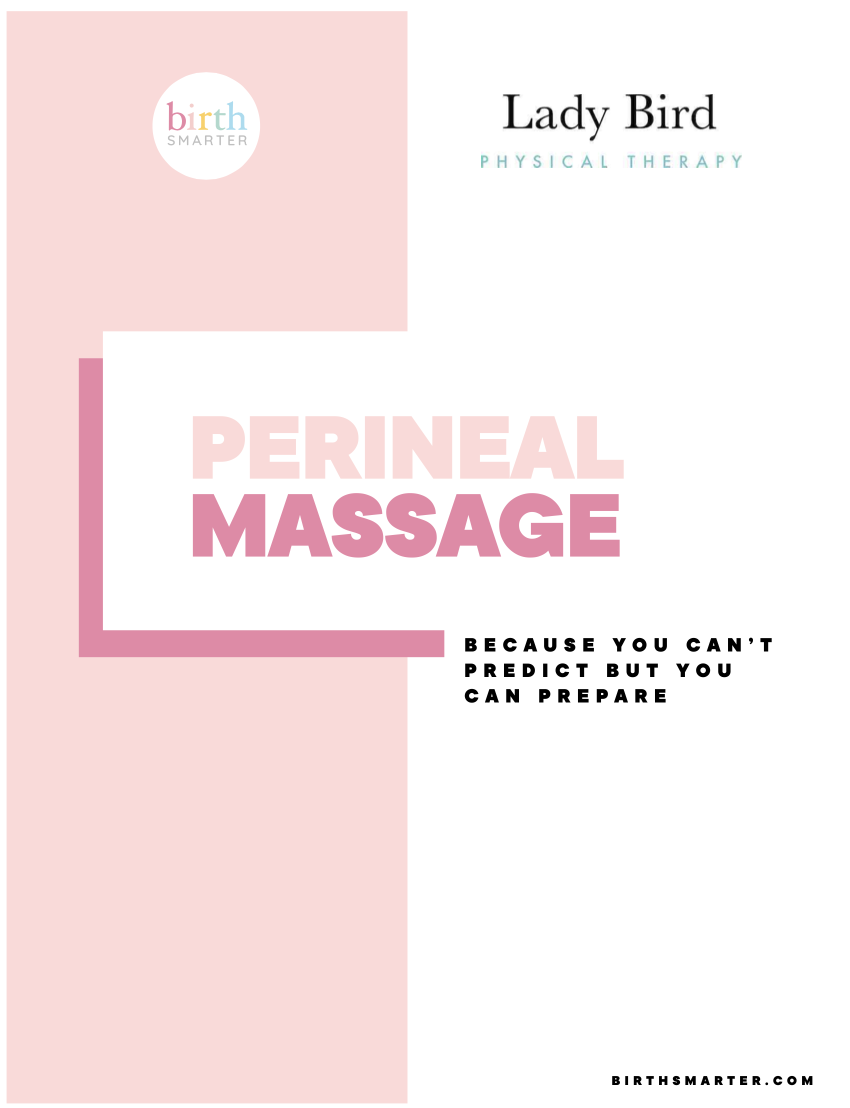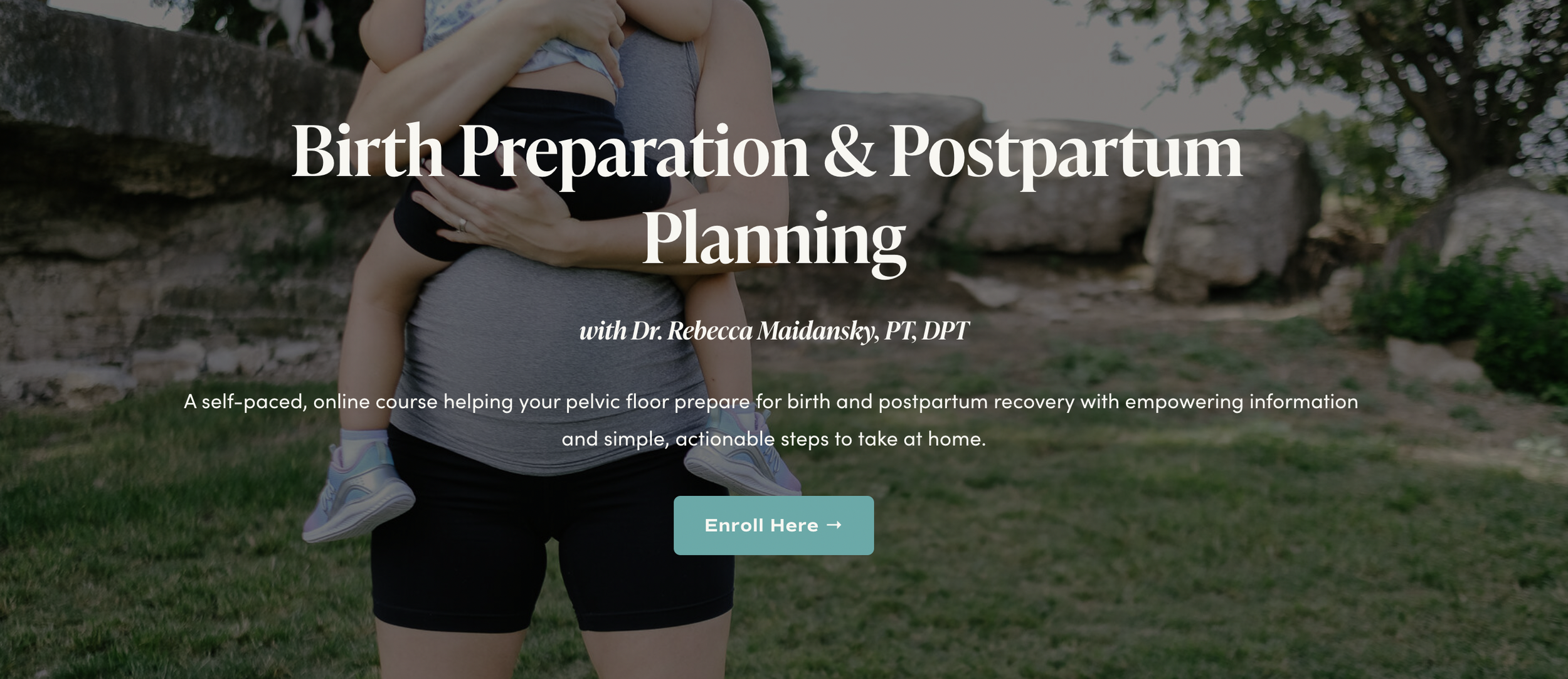2 Ways To Prepare your Pelvic Floor For Birth
More often than not, folks are unfamiliar with the pelvic floor prior to pregnancy. Those who have heard of these muscles often hold a common misconception that your pelvic floor needs to be strong to push a baby out. The reality is that excessive strengthening, or excessive kegeling, during pregnancy can contribute to increased length of second stage of labor and while pelvic floor muscle strength may be beneficial for postpartum recovery, you don’t need to kegel to prepare your pelvic floor for birth.
Your pelvic floor is a group of muscles that form a bowl-like structure at the base of your pelvis. These muscles stretch from your pubic bone to your tailbone, and between your ischial tuberosities, better known as sit bones. Your pelvic floor muscles assist in control of your bladder, bowels and sexual function. They act as a supporting structure to lift your internal organs and they work along with your abdominal muscles as part of your core.
As all skeletal muscles in the body, your pelvic floor muscle can voluntarily contract and relax. When you need to urinate but you’re stuck in a car, your pelvic floor muscles contract to hold back urine. When you sit down on the toilet, they relax to allow your bladder to empty. When you feel the urge to pass gas in yoga class, they contract to hold it in. When you make it somewhere private, they relax as you let gas pass. They contract to contribute to the pleasurable sensation of arousal and orgasm, and they relax to allow for a pain free gynecological exam.
During vaginal childbirth, your uterus and abdominal muscles contract to help your baby descend through your pelvis. Your uterus, abdominal muscles and breath are what push your baby out. The role of your pelvic floor in childbirth is to relax and move out of the way. Your pelvic floor does not push your baby out
Folks with elevated pelvic floor muscle tone may have difficulty voluntarily relaxing their muscles, leading them to contract their pelvic floor muscles and fight their uterine contractions rather than relaxing and allowing the baby to pass. Training your pelvic floor during pregnancy can help address underlying muscle tension and help teach you how to intentionally relax your pelvic floor so it doesn’t get in your way during birth. Pelvic floor muscle training during pregnancy can also help reduce the risk of urinary incontinence postpartum, reduce the severity of perineal trauma during childbirth and help prepare your pelvic floor for birth.
Here are two ways to prepare your pelvic floor for childbirth:
1. Diaphragmatic breathing in various positions
Your diaphragm is a broad muscle that lives directly under your rib cage. The diaphragm’s primary function is respiration. It contracts to trigger inhalation and relaxes to trigger exhalation. The diaphragm is also intimately linked to the pelvic floor.
Your pelvic floor and diaphragm move together like a piston as you inhale and exhale. On inhalation, both the diaphragm and pelvic floor descend towards your feet, causing a pelvic floor muscle stretch while your lungs fill with air. On exhalation, the diaphragm and pelvic floor rise, triggering a gentle contraction as your lungs expel air. Because of this relationship, we can utilize deep breathing to help improve flexibility in the pelvic floor to prepare for childbirth.
Feeling your breath in your pelvic floor can take some practice but once your body learns to coordinate this movement, every breath you take can serve to relax your pelvic floor muscles. For those having a hard time feeling this relationship with your pelvic floor and breath, practice taking deep breaths in child’s pose and happy baby pose and focus on breathing into your belly, not your chest.
2. Perineal massage
Download our free perineal massage guide here ———>
Perineal massage is a hands on technique that involves inserting a finger or a tool like a pelvic wand an inch into the vagina to stretch the tissue from 3 to 9 o’clock.
Perineal massage serves two main purposes: relaxing pelvic floor muscle tension and improving your ability to volitionally relax your pelvic floor muscles. While massage does help to manually stretch tight muscles and can be beneficial for folks with shortened pelvic floor muscles, the secondary benefit is teaching your body to breathe and relax into the discomfort of the stretch. Perineal massage should never be so painful that you cannot relax throughout massage.
To perform this technique:
Sit reclined in a comfortable position with your torso supported on pillows so your belly can relax.
Cover your finger or wand in your favorite lubricant.
Insert your finger or wand about one inch into the vagina, starting at 3 o’clock.
Apply pressure and focus on taking deep belly breaths. Hold for about 45-60 seconds. Relax and move on to the next spot, spending more time on tender points.
Continue from 3 to 9 o’clock for about 10 minutes, 3 times per week.
Do not work around 11 to 1 o’clock. This is where your urethra and pubic bone are.
These are two simple techniques you can perform at home to help your pelvic floor prepare for birth, but remember that every body and every pregnancy are different. If you’re looking for personalized support while managing pregnancy pains or preparing for birth, contact us today to schedule your in-person of virtual visit.
At Lady Bird Physical Therapy, we’re passionate about keeping you active and support your pelvic health through all stages of life. If you’re struggling with bladder, bowel or sexual symptoms, give us a call at 512-766-2649 or message us here to set up an appointment with one of our amazing pelvic floor physical therapists!
This post was written by Dr. Rebecca Maidansky, PT, DPT, owner and founder of Lady Bird Physical Therapy. Rebecca is a pelvic floor physical therapist in Austin, TX and founded Lady Bird Physical Therapy in 2019. She is the creator of Birth Preparation and Postpartum Planning, Baby Steps Fitness and the head writer and editor of The Pelvic Press.
Rebecca is a passionate writer and vocal advocate for pelvic health and the importance of improving access to perinatal care. She believes strongly that many common pregnancy pains and postpartum symptoms can be eased or even prevented with basic education and care.
She created this blog to help all birthing people manage common pregnancy pains, prepare for birth and recover postpartum.



